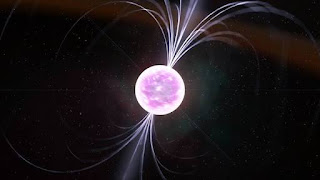Sun, a star which is the source of all the life forms on earth is a star, a star which have only half of its life left. So you might be wondering what happens when a star dies, thus following are the whole life cycle of a star :-

1. Nebula.
Nebula is basically a lump of dust which consisting hydrogen, helium and many other gases. It is a the first phase of a star or could be said as it's birth place as well. When a nebula collapses, all its gases and dusts combines to form another celestial body called as "Star".
2. Star.
This is the infancy period of a star. Star is sphere of plasma born from nebulae which contains gases like hydrogen and lithium. The temperature of a star varies from 2,000° C to 30,000° C. A star produces its own heat and light due to the continuous nuclear fusion.
3. Red Giant.
As the time passes, the surface of a star becomes colder while it's size increases. Despite of having a cold surface, it shine many times brighter than its previous form. The temperature of a red/big giant is about 2000-3000° C.
4. Neutron star.
After the nuclear reaction on a star stops, it gets crumbled and although its mass remains the same, the diameter of a star decreases. Due to the decrease in size and increase in mass, the gravity of the star (neutron star) increases. As the gravity increases, a neutron star starts sucking up its remaining surroundings like planets, meteorites, gases etc it explodes.
5. Supernova.
There are two causes of a supernova explosion
4. Neutron star.
After the nuclear reaction on a star stops, it gets crumbled and although its mass remains the same, the diameter of a star decreases. Due to the decrease in size and increase in mass, the gravity of the star (neutron star) increases. As the gravity increases, a neutron star starts sucking up its remaining surroundings like planets, meteorites, gases etc it explodes.
5. Supernova.
There are two causes of a supernova explosion
- In the case of white dwarf :- When a star(white dwarf) sucks the matter from another weaker star, it becomes unbearable for the remaining star to cope up with the weight of all that matter and it explodes.
- In case of neutron star :- When the nuclear fusion on a star stops, its mass shifts to its centre which results in the creation of neutron star. After that it explodes resulting in a supernova.
6. Black Hole.
It is the last stage of a star. It is believed that black holes are formed when a star dies. Black hole tends to have a huge gravitational force which is even greater than a neutron star. It has so much gravitational force that even light rays are unable to reflect from it, thus no one has seen a black hole.




Comments
Post a Comment